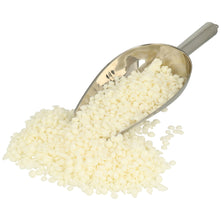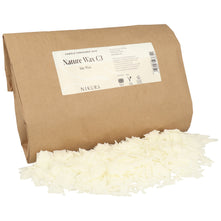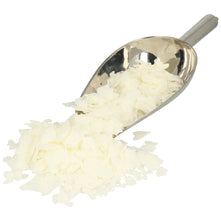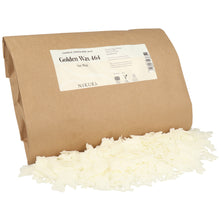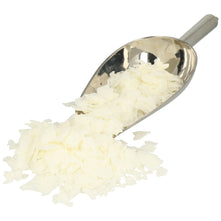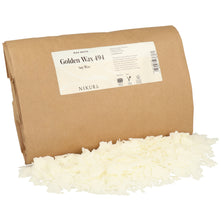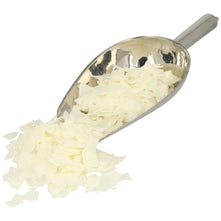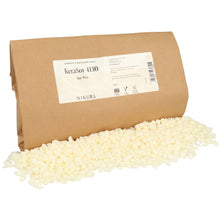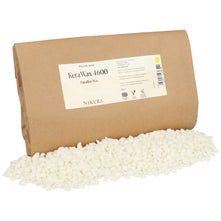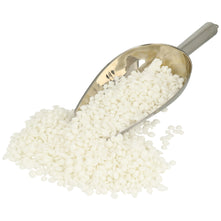- Home
- Candle and Wax Melt Supplies
Candle and Wax Melt Supplies
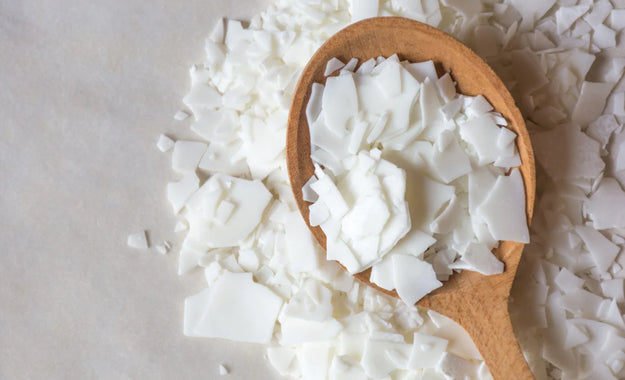
Wax melts and candles are a quick and easy way to make your home smell incredible - Shop our selection of essential candle and wax melt supplies to make your next project the best it’s ever been.

Information
Is candle making profitable?
Candle making businesses can be highly profitable, especially if you're offering a good range of unique scents and customisations.
Candles are one of those items that never really go out of style, so starting up your own business can certainly provide you with a solid client base before you even get started.
There is also a very low-cost barrier to starting a candle business, so you don't have to worry about breaking the bank too much.
Is it cheaper to make your own candles?
If you find yourself buying five or more scented candles a year, it's almost definitely cheaper to invest some time in making your own.
The world of crafting offers the chance to make beautiful candles with your favourite custom scents, colours, and shapes - without having to sift through 1000 sites to find them.
Gathering your candle making equipment sorted is an easy practice too, and you can refer to our list above for all the tools you'll need to get started.
Which wax holds the most scent?
Generally, paraffin wax is hailed as the wax that holds the most amount of fragrance, although that doesn't necessarily mean it's the best for you to use.
Soy wax can also hold long-lasting, highly effective fragrances, while simultaneously providing you with an all-natural base that won't release toxic fumes.
How much does it cost to make 100 candles?
The cost of your homemade candles will depend on a number of factors, such as the size of your containers, the number of oils you're using, the type of wax you're using, and the quality of the ingredients.
That being said, the average cost to make 100 candles tends to be around £120, give or take several of these conditions.
Frequently Asked Questions
Fragrance oils are added to candles to enhance the sensory experience. When the candle burns, the fragrance oil heats up, releasing a pleasant aroma that can set a mood, evoke memories, or create a specific ambiance in a space.
Scented candles can transform an environment, making it feel cosy, romantic, refreshing, or even festive, depending on the chosen scent. Additionally, many individuals find certain fragrances therapeutic, aiding in relaxation, focus, or rejuvenation.
To preserve the quality and lifespan of your candles, store them in a cool, dry place away from direct sunlight, which can cause fading or warping. Keep them in an upright position to prevent deformities.
If candles are scented, it's best to store them in their original packaging or wrap them in foil or plastic to retain the fragrance. Avoid storing candles near heaters or in hot cars, as extreme temperatures can affect their shape and scent.
For long taper or pillar candles, lying them flat can prevent warping. Regularly dust off stored candles to maintain their appearance and ensure a clean burn when lit.
When crafting candles, the fragrance oil you choose plays a pivotal role in setting the ambiance. Common categories of fragrance oils include:
Floral: Evoking romantic and calming atmospheres with scents like rose or lavender.
Citrus: Bright and invigorating, with aromas like lemon or grapefruit.
Woody: Creating a cosy environment with notes of cedarwood or pine.
Spicy: Introducing a festive or exotic touch through scents like cinnamon.
Fruity: Offering playful and sweet aromas, such as apple or berry.
Your choice should align with the mood or setting you aim to create with your candle.
Most waxes will be perfectly safe for melting as long as the proper precautions for use are put into place.
The only type of wax which may cause harm when melted or burned is paraffin wax. Paraffin wax is made from petroleum oil - which is also used to make gasoline - and can release harmful chemicals like benzene and toluene when melted.
For this reason, natural waxes like soy wax or beeswax are generally best for your wax melts.
The amount of wax melts you'll get out of 1kg will largely depend on the mould sizes you're using, so there's no real way of judging it for certain.
Generally, though, 1kg of soy wax will equate to around 1174ml of liquid wax when melted.
The amount of candles you'll get out of your wax will largely depend on the size of the container you're using - tea light candles are likely to go a lot further with 1kg of wax than three wick candles.
For reference, though, a standard collection of 20cl candle glasses should make a total of around 6 candles.
Deciding between fragrance oils and essential oils for your candle is a question many hobbyists continually face.
The primary difference between both oil types is that fragrance oils are synthetic, while essential oils are natural. Both can be used in candles, and both have their own advantages.
Most crafters, however, prefer the stability that a fragrance oil provides them with. Fragrance oils are more often than not designed for candle making specifically, meaning they tend to carry a better scent throw and are easier to work with.
They also offer aromas that have more personality than their natural counterparts. That being said, fragrance oils do not have the aromatherapy benefits that essential oils provide.
Find out more about the difference between essential oils and fragrance oils.
Wax Comparison Table
| Golden Wax 464 | Golden Wax 494 | Nature Wax C3 | KeraWax 4600 | KeraSoy 4130 | KeraSoy 4120 | |
|---|---|---|---|---|---|---|
| Format | Flakes | Flakes | Flakes | Pastilles | Pastilles | Pastilles |
| Container Candles | Yes | No | Yes | No | Yes | No |
| Pillar Candles | No | Yes | No | Yes | No | Yes |
| Tea Lights | Yes | No | Yes | No | Yes | No |
| Wax Melts | No | Yes | No | Yes | No | Yes |
| Fragrance Load | 8% | up to 10% | 8-10% | 12% | 10-12% | 5-10% |
| Melting Point | 70-75°C | 52-58°C | 51-55°C | 57°C | 42-48°C | 60°C |
| Fragrance Addition Temperature | 60-70°C | 70-75°C | 55-60°C | 82-85°C | Immediately prior to pouring | Immediately prior to pouring |
| Colour Addition Temperature | 80-85°C | 76-82°C | Powder 88°C Liquid, block or chips 68°C |
Powder 80°C Liquid, block or chips 70°C |
Powder 75°C Liquid, block or chips 70°C |
Powder 75°C Liquid, block or chips 70°C |
| Pouring Temperature | 60°C | 65-75°C | 55°C | 55-65°C | 45-55°C | 55-65°C |
| Cure Time | at least 2 days at 18-25°C | at least 2 days at 21-24°C | at least 2 days at 20-25°C | at least 2 days at 18-25°C | at least 2 days at 20-25°C | at least 3 days 18-25°C |
What is the difference between candle wax and wax melts?
There are many features that separate a candle and a wax melt. We've detailed some of the most prominent distinctions below:
- Wax melts have a longer burn time, thanks to their ability to absorb heat slower.
- Wax melts are generally cheaper to make and produce than candles, as they waste less fragrance.
- It is easier to control and alter the scent of a wax melt.
- Wax melts are flame-free.
If you like to travel with your creations, wax melts will also be much easier to transport than candles, thanks to their size and lack of glass.
Soy vs paraffin wax
When it comes to choosing between soy and paraffin wax for candles, both have distinct characteristics and benefits that cater to different preferences and needs.
Here's a breakdown of each:
Soy Wax
- Eco-Friendly: Soy wax is made from soybeans, a renewable resource, making it an environmentally friendly choice. It's biodegradable and produces significantly less soot compared to paraffin, contributing to cleaner air quality indoors.
- Longer Burning: Candles made from soy wax typically burn slower and cooler, meaning they last longer than paraffin candles. This can make soy candles more cost-effective over time.
- Cleaner Burn: Soy wax burns cleaner, with less soot and toxic chemicals released into the air, making it a healthier choice for indoor environments.
- Easy Clean-Up: Spills can be cleaned up easily with soap and water, thanks to soy wax's lower melting point.
Paraffin Wax
- Cost-Effective: Paraffin wax is generally less expensive than soy wax, making it a budget-friendly option for candle making.
- Scent Throw: Paraffin wax is known for its excellent scent throw, both when the candle is lit and unlit. This means candles made from paraffin can more effectively fill a room with fragrance.
- Texture and Appearance: Paraffin wax offers a smooth, even texture that can result in a polished, professional look for candles. It also holds colour well, allowing for vibrant, brightly coloured candles.
What supplies do you need to make candles?
For those that have never made a candle before, it can be overwhelming seeing all the possible options out there. But no need to fear!
We've outlined the staples you'll find in most candle making kits, so you're free to experiment with any other added ingredients (like dyes or glitters) you'd like from there.
You will need:
- A candle container
- Candle wax - preferably soy wax flakes
- Fragrance oils or essential oils of your choice
- Candle wicks
- Glue dots
- A heat-proof glass bowl
Your candle container can be any size you'd like, but remember that the amount of wax and fragrance oil you add must be modified to accommodate this.
Your wax will need to be around twice the size of your container, and your wick length should be significantly taller than the rim.
If you're not sure how to best to measure the scents you want to use, you can check out our candle fragrance measuring guide.
How to make candles at home
When making candles, it's always important to follow a trusted recipe. If you're a complete beginner, our beginner's guide may be a good place to start.
If you're working with fragrance oils in particular, our fragrance oil candle making guide may suit you better. We'll be touching on some of the basics below.
- Place your wax flakes in a heatproof bowl and place over a pan of hot water. Leave it to sit until the wax has melted and then set aside for a minute.
- Take your chosen container and use a glue dot to place your wick inside. Try to attached it to the centre base as closely as you can.
- Use a wick holder, chopsticks, or a couple of pencils to help keep the wick straight.
- Going back to your wax, add the fragrance oils or essential oils of your choice.
- Take the melted wax and carefully pour it into your container.
- Wait 24 hours to allow the wax to cool, then snip off the wick to your desired length.
- Light your candle and enjoy!
What supplies do you need to make wax melts?
The best thing about wax melts is that they don’t require much in terms of pre-planning or complicated preparation work.
A wax melt making kit will usually contain a few basic ingredients, which we’ve detailed below:
- Sox wax flakes (or any other kind of wax)
- Your choice of essential oils or fragrance oils
- Silicone moulds in your preferred shape
- Mica powder in your preferred colour (optional)
It might also be a good idea to have a glass jug handy for all your pouring. On top of these basic wax melt kit ingredients, you can also include fun additions like wax dyes or glitter to really make your designs stand out.
Fragrance oils are usually the preferred choice for wax melts, as they tend to be designed for crafting purposes, but feel free to use essential oils or essential oils blends too.
If you’re unsure which scents to choose for your next project, you can check out our best fragrance oils for wax melts.
The use of essential oils may also come in handy if you’re looking to add aromatherapy benefits to your wax melts - like facilitating relaxation or promoting an energising atmosphere.
How to make wax melts at home
Wax melts only require a few simple steps to create, and are fairly universal in their methods too.
We’ve broken down a basic version of the method below, but we recommend also having a glance at our beginner’s guide to making wax melts for more detailed information.
- Place your wax into your heatproof glass jug.
- Pop the jug in the microwave for 30 seconds to melt your wax. Take the jug out, stir, and then put back in the microwave for another 30 seconds. Repeat this method until the wax is fully melted.
- Watch out for signs of overheating on your wax. White spots are usually an indication of this. They won’t do any harm, but they might make your melts look less professional.
- Once the wax has cooled slightly, add in your chosen essential oils or fragrance oils.
- Pour the wax into your silicone moulds and leave in a cool place until hardened. Don’t place them in the fridge though, as the wax could crack if it’s too cold.
- Remove from the moulds and enjoy!
Can I buy wax melt making supplies wholesale?
If you're a business owner looking for wholesale wax melt supplies, you can fill in our wholesale form to learn more about what we offer.
Can I buy candle making supplies wholesale?
Interested in wholesale candle making supplies? Candle making offers a wealth of possibilities for customisation and creativity. Each time you make one, you can change up the scent, colour, or even the shape to feed your mind with new opportunities.
If you're a business owner looking for wholesale candle supplies, you can fill in our wholesale form to learn more about what we offer.
Related Articles
What Temperature Does Candle Wax Melt At?
Legal Requirements for Selling Candles & Wax Melts
What is the Best Wax for Wax Melts?
What is the Best Wax for Candles?

